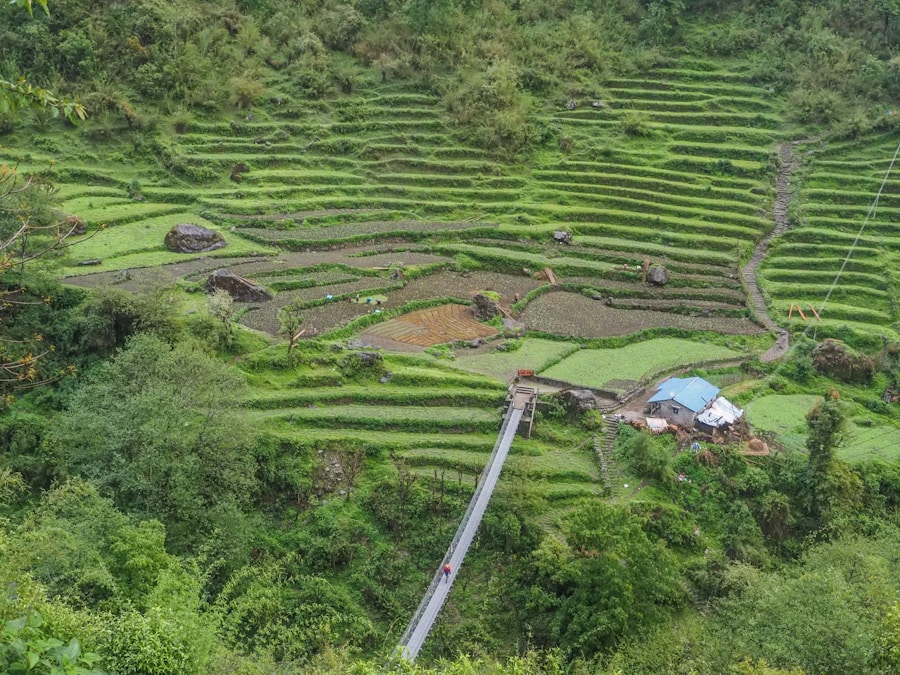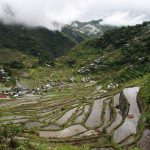Download links
How to install Banaue Rice Terraces: A Marvel of Ancient Engineering APK?
1. Tap the downloaded Banaue Rice Terraces: A Marvel of Ancient Engineering APK file.
2. Touch install.
3. Follow the steps on the screen.
Description
Nestled in the mountainous region of the Philippines, the Banaue Rice Terraces are often referred to as the “Eighth Wonder of the World.” This breathtaking landscape, carved into the mountainsides over 2,000 years ago, showcases the ingenuity and resilience of the Ifugao people, who have cultivated rice in these terraces for generations. The terraces span approximately 2,000 square kilometers and are a testament to the harmonious relationship between humans and nature. The intricate system of irrigation and cultivation not only provides sustenance for the local population but also serves as a cultural symbol of the Ifugao heritage.
The Banaue Rice Terraces are not merely agricultural fields; they represent a complex socio-economic system that has evolved over centuries. The terraces are a living testament to the Ifugao’s deep understanding of their environment, showcasing their ability to adapt to the challenging topography of the Cordillera mountain range. The rice terraces are not just a means of food production; they embody a way of life that is intricately linked to rituals, traditions, and community values.
As such, they have garnered international recognition, being designated as a UNESCO World Heritage Site in 1995, which underscores their global significance.
Key Takeaways
- The Banaue Rice Terraces are a UNESCO World Heritage site located in the Philippines, known for their stunning beauty and cultural significance.
- The terraces were built over 2,000 years ago by the Ifugao people using traditional engineering and construction techniques, and they continue to be an important part of the local culture and economy.
- Preservation efforts are underway to protect the terraces from erosion and modern development, but challenges such as climate change and population decline pose significant threats to their long-term survival.
- Tourism has brought economic benefits to the region, but also presents challenges in terms of preserving the terraces and managing the impact of visitors on the environment and local communities.
- The Banaue Rice Terraces have a significant legacy as a symbol of ancient engineering and sustainable agriculture, and they continue to inspire admiration and awe from people around the world.
History and Cultural Importance
The history of the Banaue Rice Terraces is deeply intertwined with the Ifugao culture, which dates back over a millennium. According to oral traditions, the terraces were constructed by the ancestors of the Ifugao people using rudimentary tools and techniques passed down through generations. The construction of these terraces was not merely an agricultural endeavor; it was a communal effort that involved the entire community.
Families would come together to build and maintain the terraces, fostering a sense of unity and cooperation that is still evident in Ifugao society today. Culturally, the rice terraces hold immense significance for the Ifugao people. They are not just fields; they are sacred spaces that are integral to various rituals and ceremonies.
The planting and harvesting seasons are marked by traditional festivals that celebrate the connection between the people and their land. For instance, the “Punnuk” festival is a vibrant celebration that involves ritualistic tug-of-war games on rice terraces, symbolizing community strength and cooperation. Such events reinforce cultural identity and continuity, ensuring that younger generations remain connected to their heritage.
Engineering and Construction Techniques

The engineering prowess demonstrated in the construction of the Banaue Rice Terraces is nothing short of remarkable. The terraces were built using locally sourced materials, primarily stone and mud, which were skillfully arranged to create a series of flat fields on steep slopes. This ingenious design not only maximizes arable land but also minimizes soil erosion, allowing for sustainable agriculture in an otherwise challenging environment.
The terraces are often built in a stair-step fashion, with each level carefully designed to capture rainwater and facilitate irrigation. The irrigation system employed in the Banaue Rice Terraces is equally impressive. Water is channeled from nearby rivers and streams through a network of bamboo pipes and dikes that distribute it evenly across the terraces.
This intricate system ensures that each terrace receives adequate water for rice cultivation while preventing flooding or drought conditions. The Ifugao people’s understanding of hydrology and their ability to manipulate natural resources demonstrate a sophisticated level of environmental management that has been honed over centuries.
Preservation Efforts and Challenges
| Preservation Efforts and Challenges | Metrics |
|---|---|
| Number of historic sites preserved | 150 |
| Percentage of budget allocated to preservation | 10% |
| Number of endangered historic sites | 50 |
| Percentage of public support for preservation | 75% |
Despite their historical and cultural significance, the Banaue Rice Terraces face numerous challenges that threaten their preservation. One of the most pressing issues is climate change, which has led to unpredictable weather patterns affecting rice production. Increased rainfall can cause landslides, while prolonged droughts can devastate crops.
These climatic changes pose significant risks to the delicate balance that sustains the terraces and the livelihoods of those who depend on them. In response to these challenges, various preservation efforts have been initiated by both local communities and international organizations. The Ifugao people have taken proactive steps to revitalize traditional farming practices and promote sustainable agriculture.
Educational programs aimed at younger generations emphasize the importance of maintaining these cultural landscapes. Additionally, NGOs and government agencies have collaborated on projects to restore damaged terraces and improve irrigation systems. However, these efforts often face obstacles such as limited funding, lack of technical expertise, and competing economic interests that prioritize short-term gains over long-term sustainability.
Tourism and Economic Impact
Tourism has emerged as a double-edged sword for the Banaue Rice Terraces. On one hand, it provides a vital source of income for local communities, as visitors flock to witness the stunning vistas and experience Ifugao culture firsthand. The influx of tourists has led to the establishment of guesthouses, restaurants, and local handicraft shops, creating job opportunities for residents.
This economic boost has allowed some families to invest in education and healthcare, improving their overall quality of life. On the other hand, increased tourism poses significant risks to the integrity of the rice terraces. The environmental impact of foot traffic can lead to soil erosion and degradation of the terraces themselves.
Additionally, there is a growing concern about cultural commodification, where traditional practices may be altered or commercialized to cater to tourist expectations. Striking a balance between promoting tourism and preserving cultural heritage is an ongoing challenge for local leaders and stakeholders.
Significance and Legacy

The significance of the Banaue Rice Terraces extends far beyond their aesthetic appeal; they embody a rich cultural legacy that reflects the resilience and ingenuity of the Ifugao people. As a UNESCO World Heritage Site, they serve as a reminder of humanity’s capacity to adapt to challenging environments while maintaining a deep respect for nature. The terraces are not just agricultural landscapes; they are living monuments that tell stories of ancestral wisdom, communal cooperation, and sustainable living.
The legacy of the Banaue Rice Terraces is also evident in their influence on contemporary agricultural practices in similar mountainous regions around the world. They serve as an inspiration for sustainable farming techniques that prioritize environmental stewardship while ensuring food security for local populations. As global awareness of climate change grows, the lessons learned from the Ifugao people’s relationship with their land become increasingly relevant.
If you are interested in exploring unique landscapes like the Banaue Rice Terraces, you may also enjoy reading about the exciting sport of Freefire Football. This article discusses the thrilling and extreme sport played on the field, providing a different kind of adventure for those seeking excitement. Check out the article here to learn more about this action-packed game.
FAQs
What are the Banaue Rice Terraces?
The Banaue Rice Terraces are ancient terraces carved into the mountains of Ifugao in the Philippines. They are often referred to as the “Eighth Wonder of the World” and are a UNESCO World Heritage Site.
How were the Banaue Rice Terraces created?
The terraces were hand-carved over 2,000 years ago by the ancestors of the indigenous Ifugao people using minimal equipment. They were created to make the mountainous terrain suitable for rice cultivation.
What is the significance of the Banaue Rice Terraces?
The terraces are not only a stunning example of ancient engineering and agricultural practices, but they also hold cultural and spiritual significance for the Ifugao people. They are a symbol of their connection to the land and their ancestors.
How large are the Banaue Rice Terraces?
The terraces cover approximately 10,360 square kilometers of mountainside and are estimated to stretch about 20,000 kilometers if laid end to end.
Can visitors explore the Banaue Rice Terraces?
Yes, visitors are welcome to explore the terraces and the surrounding villages. There are hiking trails and guided tours available for those who want to experience the beauty and history of the area.





